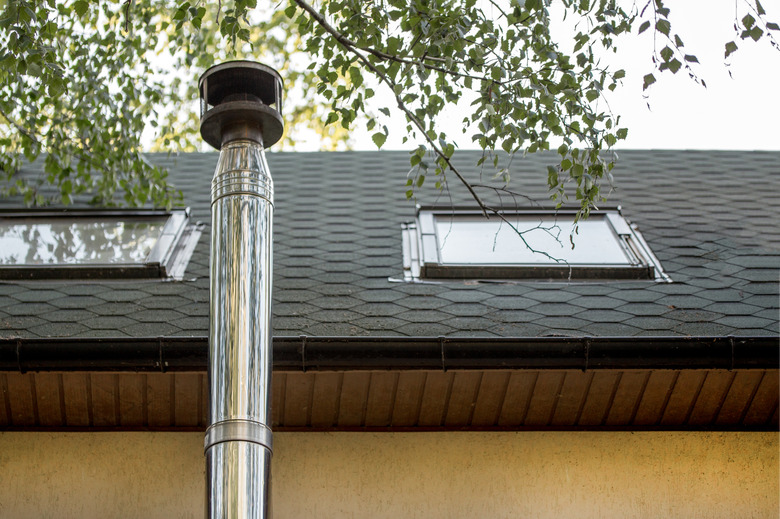Installing A Furnace Flue Pipe
We may receive a commission on purchases made from links.
Being a DIYer is a money-saving, empowering way to live your life, but sometimes, you have to leave it to the pros. Installing a furnace flue pipe for safe venting is call-a-pro time. This isn't a "close is good enough" scenario, like plastering a wall or installing a sink. Once you understand the process, you'll understand why.
Furnace Flue Pipes Aren’t DIY
Furnace Flue Pipes Aren't DIY
Having a furnace flue pipe is not an option; it's a must because a major source for carbon monoxide poisoning in any home is your furnace. When it comes to your garden-variety standard gas furnace, the flue pipe is what expels all pollutants and any combustion byproducts from the furnace to the great outdoors. Venting needs are different between a conventional gas furnace and a high-efficiency furnace. If there is even the slightest flaw in the installation, you could find your home slowly filling with toxic carbon monoxide (CO2), which is a gas that can kill you and your family.
Be aware that getting a new furnace means you should redo the flue pipe, as they are not "one size fits all." The flue pipe system works on a principle called "natural draft," in which the most expedient route out of the furnace is necessary for your gases to rise up and exit safely to the outdoors using natural convection (hot air rises). This is all based on a pressure differential, and that's something for which HVAC experts know how to design with flue pipes.
How Are Flue Pipes Installed?
How Are Flue Pipes Installed?
The gases pumping out from a standard gas furnace to the outdoors are hot, so it's a job for aluminum or galvanized metal piping, not PVC. Installing them is a precision job when it comes to securing that pressure differential for safe venting of your furnace. Your HVAC pro's main mission is to create the most efficient and direct route from your furnace to the roof.
The job itself isn't that hard. The HVAC tech will remove the old flue pipe and clean the flue itself and should inspect things like the damper. He will plot the distance from the flue to the chimney, figuring out pipe angles for the most efficient natural draft exhaust. Then, he'll cut new galvanized metal ductwork of the right diameter and length, installing it from the furnace out, fitting each crimped end of pipe into a noncrimped end.
Each piece of pipe is secured by four sheet metal screws and is sealed with high-temperature caulking. If the flue meets an existing chimney, the chimney will be thoroughly inspected as part of the flue installation. The flue pipe is secured to the house framing with galvanized steel straps to reduce pressure on joints and help keep the joint seals intact.
It Sounds Easy, But It's Not
It Sounds Easy, But It's Not
While all of this isn't wildly complicated, harnessing natural draft and negative pressure for dispelling exhaust efficiently is critical to getting this job right. Plus, complex building codes and safety considerations for proper venting and air intake are why it takes a qualified HVAC person to get the job done properly for your furnace model as well as your home's quirks.
An annual maintenance inspection of your furnace is always a good idea, and this includes a visual inspection of the flue. This is important because metal flues do corrode and over time can develop holes and cracks that can let CO and other pollutants leak into your living space.
